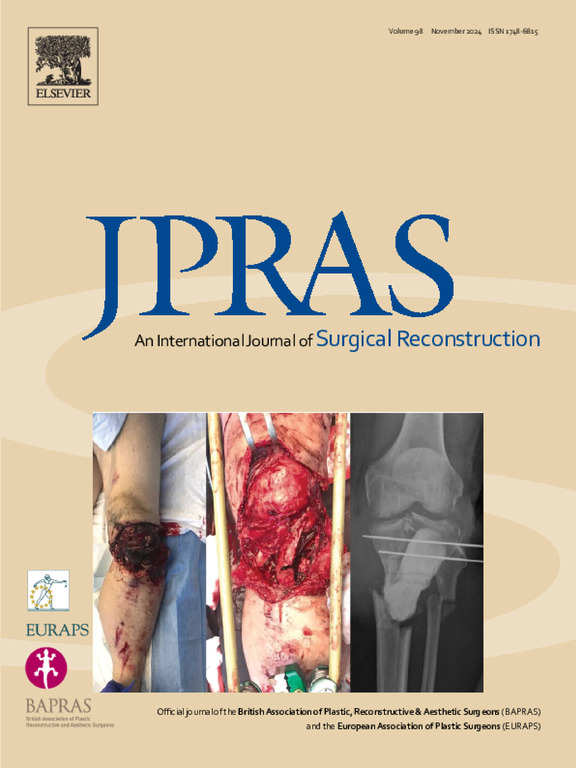评估性别确认手术使用方面的种族差异和医院层面的经验。
IF 2.4
3区 医学
Q2 SURGERY
Journal of Plastic Reconstructive and Aesthetic Surgery
Pub Date : 2024-10-25
DOI:10.1016/j.bjps.2024.10.034
引用次数: 0
摘要
少数种族和少数族裔群体以及寻求性别确认护理和手术的少数性别群体在获得医疗保健服务和体验方面历来存在困难。这两个群体的交集可能会导致寻求性别确认手术的少数种族和少数族裔患者在医疗保健方面的不足。本研究旨在探索不同种族在性别确认生殖器手术体验方面的差异。2018-2021年医疗保健利用项目全国住院患者调查对性别确认手术进行了查询。收集了人口统计学、住院患者安全和医院层面的特征。结果按种族进行分层,并评估是否存在显著差异。共有 4605 名患者被纳入研究,其中 3345 名患者被确认为白人(73%),320 名患者被确认为黑人/非洲裔美国人(7%),485 名患者被确认为西班牙裔/拉丁美洲人(11%),110 名患者被确认为亚洲/太平洋岛民(2%)。黑人/非洲裔美国人患者的住院医疗并发症发生率高于总人口(1% 对 3%,P = 0.004),住院时间也更长(3 天对 5 天,P = 0.005)。本文章由计算机程序翻译,如有差异,请以英文原文为准。
Assessing racial disparities in gender-affirming surgery utilization and hospital-level experience
Racial and ethnic minority groups as well as gender minorities seeking gender-affirming care and surgery have historically had difficulties with healthcare access and experience. The intersection of these two groups may result in deficient healthcare for patients of minority racial and ethnic groups seeking gender-affirming surgery. This study sought to explore differences in gender-affirming genital surgery experience by race. The 2018–2021 Healthcare Utilization Project National Inpatient Survey was queried for gender-affirming surgeries. Demographic, inpatient safety, and hospital-level characteristics were collected. Results were stratified by race and evaluated for significant differences. A total of 4605 patients were included in the study, 3345 patients were identified as White (73%), 320 as Black/African American (7%), 485 as Hispanic/Latino (11%), and 110 as Asian/Pacific Islander (2%). Black/African American patients experienced a higher rate of inpatient medical complications than the overall population (1% vs. 3%, P = 0.004) and had a longer length of stay (3 vs. 5 days, P < 0.001). The highest total charges were observed among Black/African American patients ($130,873, IQR $119,235, P < 0.001). Black/African American patients also less often experienced routine discharge (94% vs. 81%, P < 0.001) and more often required a higher level of care upon discharge, such as home healthcare or transfer to another facility (6% vs. 17%, P < 0.001). While the healthcare population is becoming more diverse, healthcare disparities still exist among non-White individuals receiving gender-affirming genital surgery. The present data suggest that Black/African American patients receiving gender-affirming genital surgery have more complicated hospital and discharge courses, and experience higher total hospital charges.
求助全文
通过发布文献求助,成功后即可免费获取论文全文。
去求助
来源期刊
CiteScore
3.10
自引率
11.10%
发文量
578
审稿时长
3.5 months
期刊介绍:
JPRAS An International Journal of Surgical Reconstruction is one of the world''s leading international journals, covering all the reconstructive and aesthetic aspects of plastic surgery.
The journal presents the latest surgical procedures with audit and outcome studies of new and established techniques in plastic surgery including: cleft lip and palate and other heads and neck surgery, hand surgery, lower limb trauma, burns, skin cancer, breast surgery and aesthetic surgery.

 求助内容:
求助内容: 应助结果提醒方式:
应助结果提醒方式:


